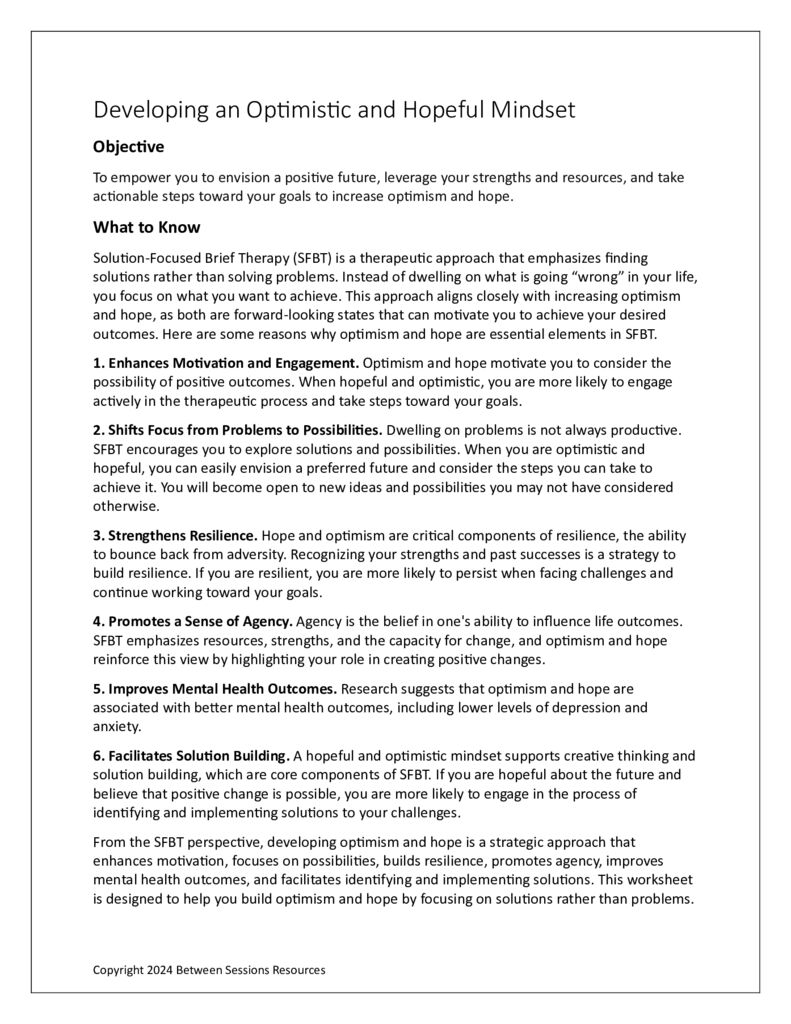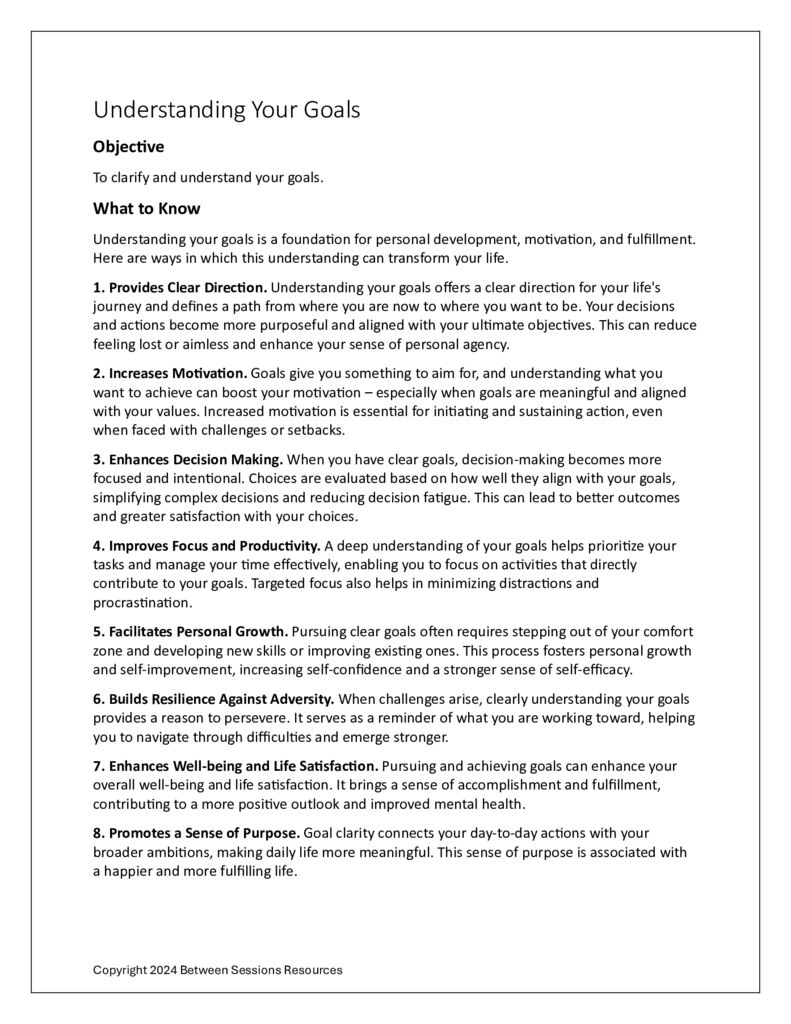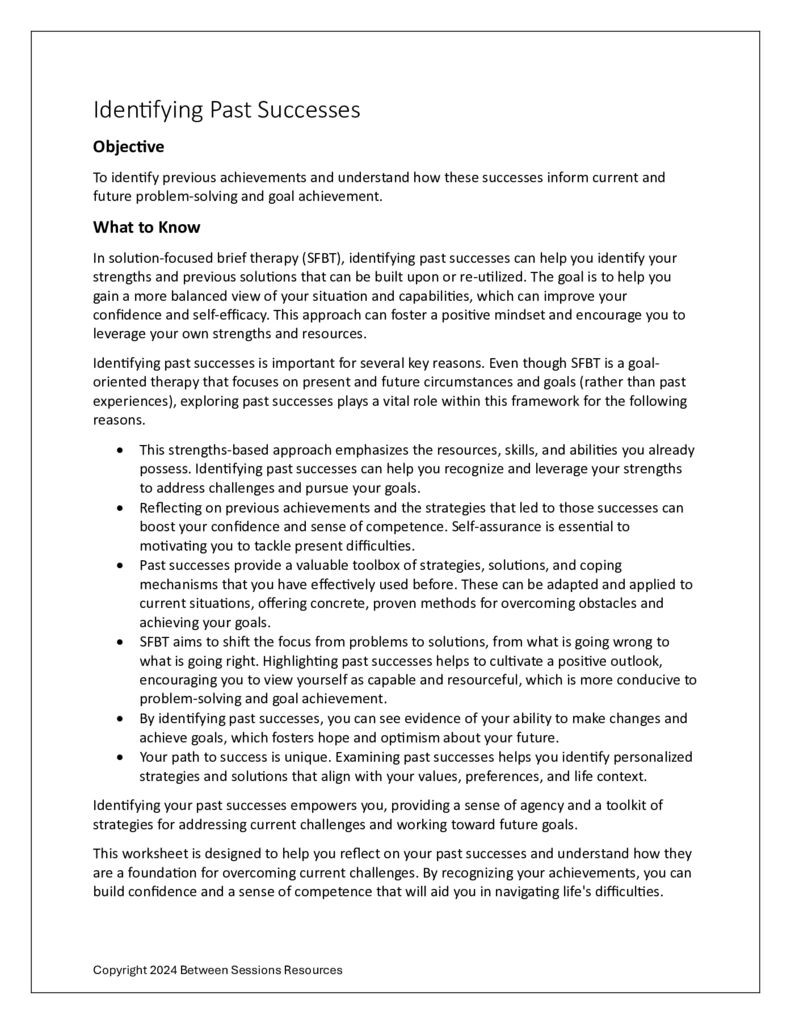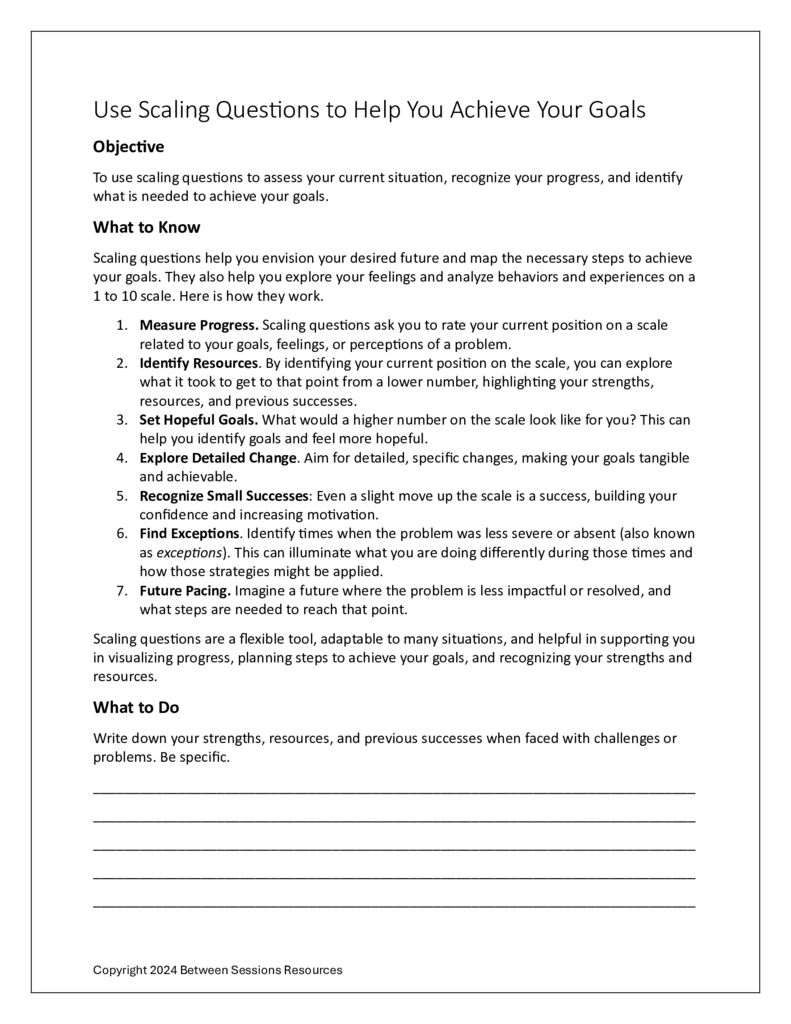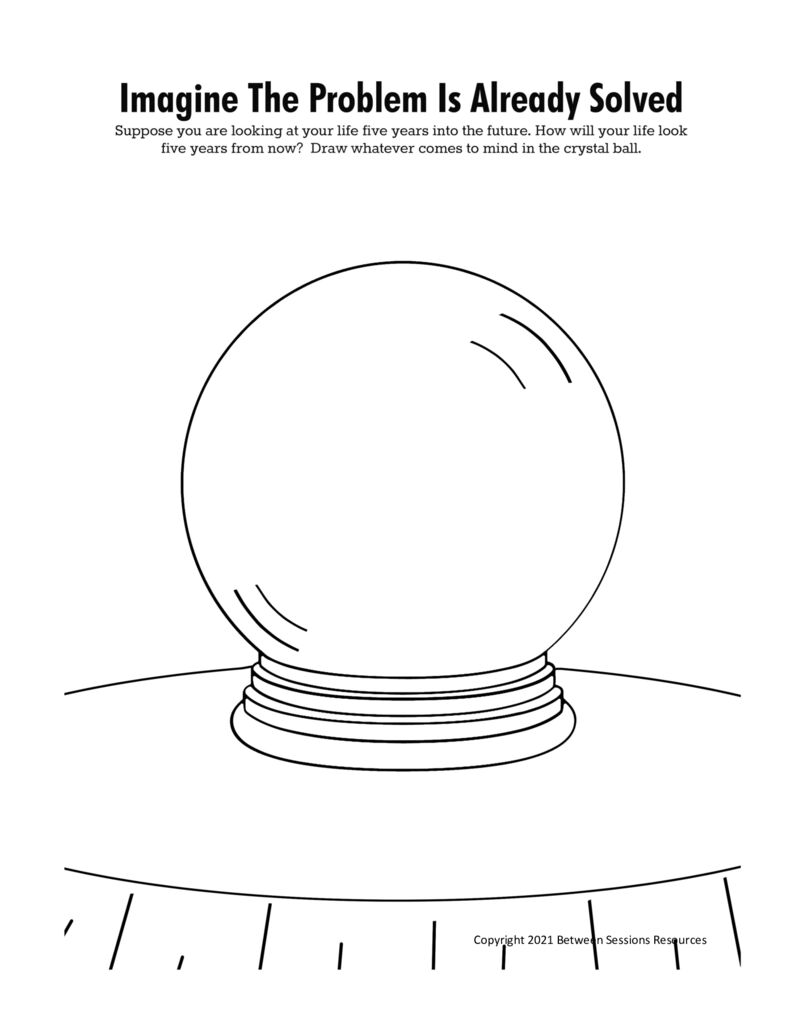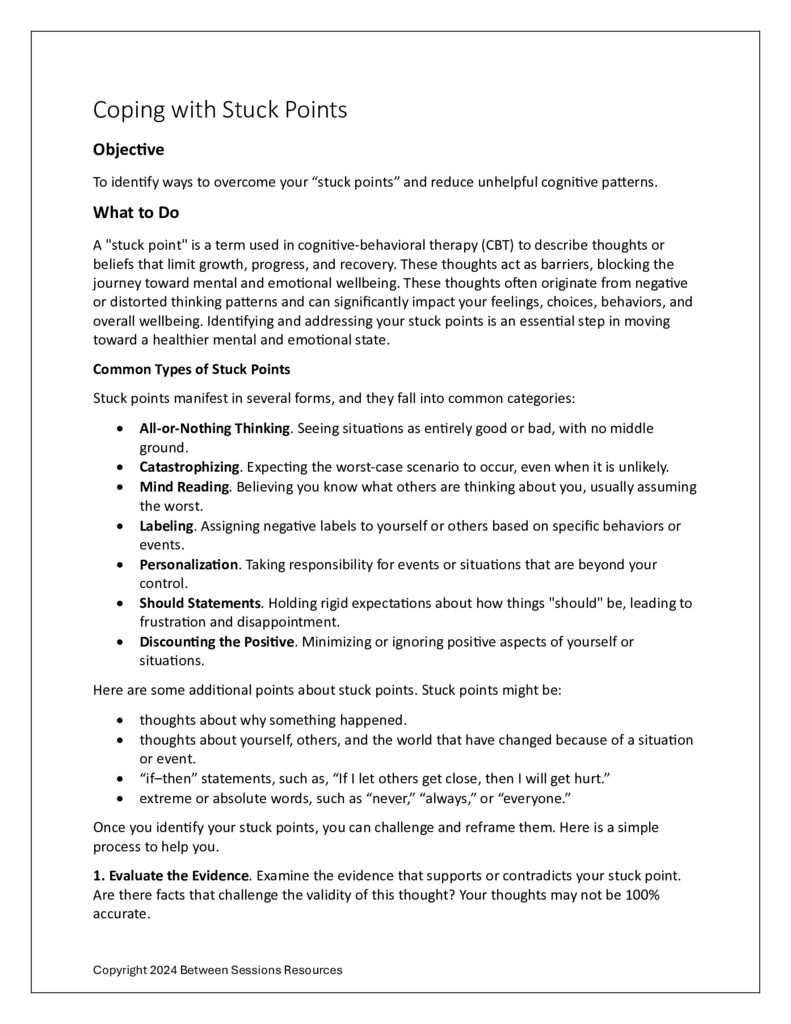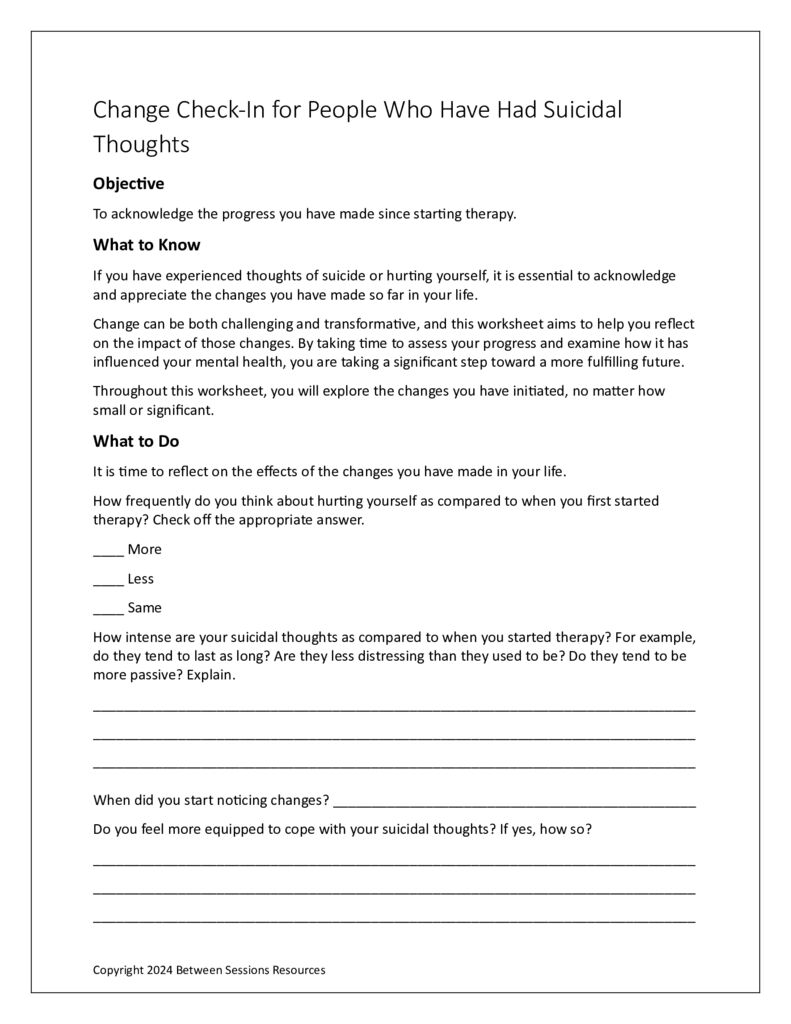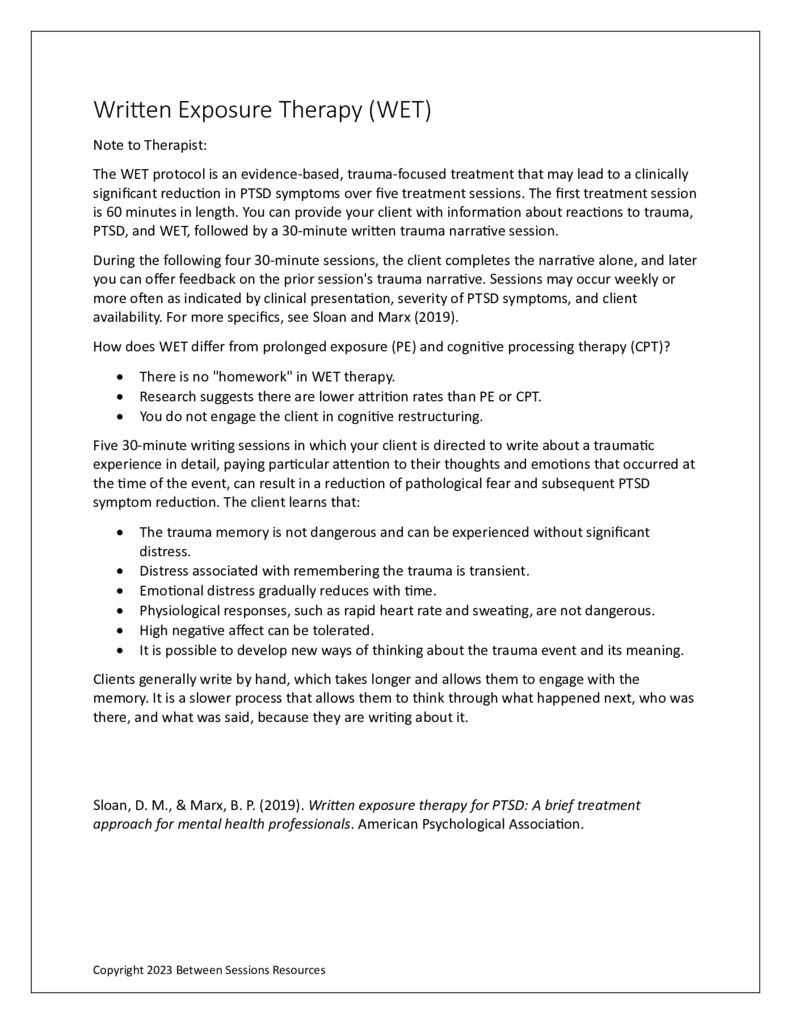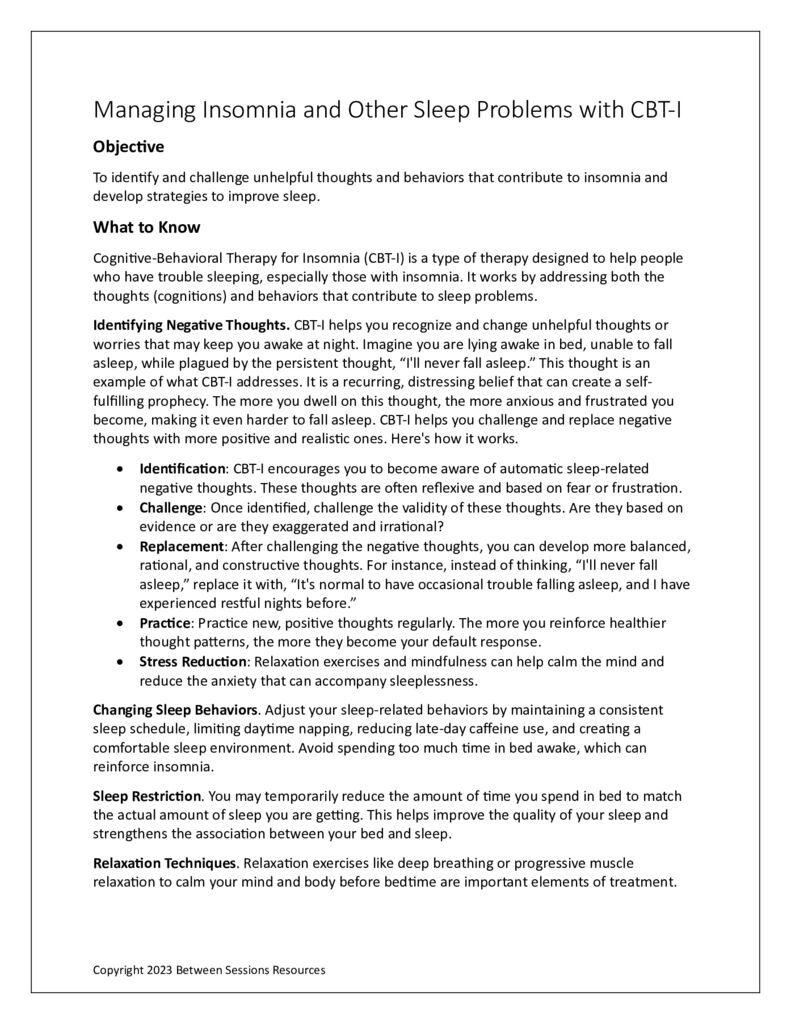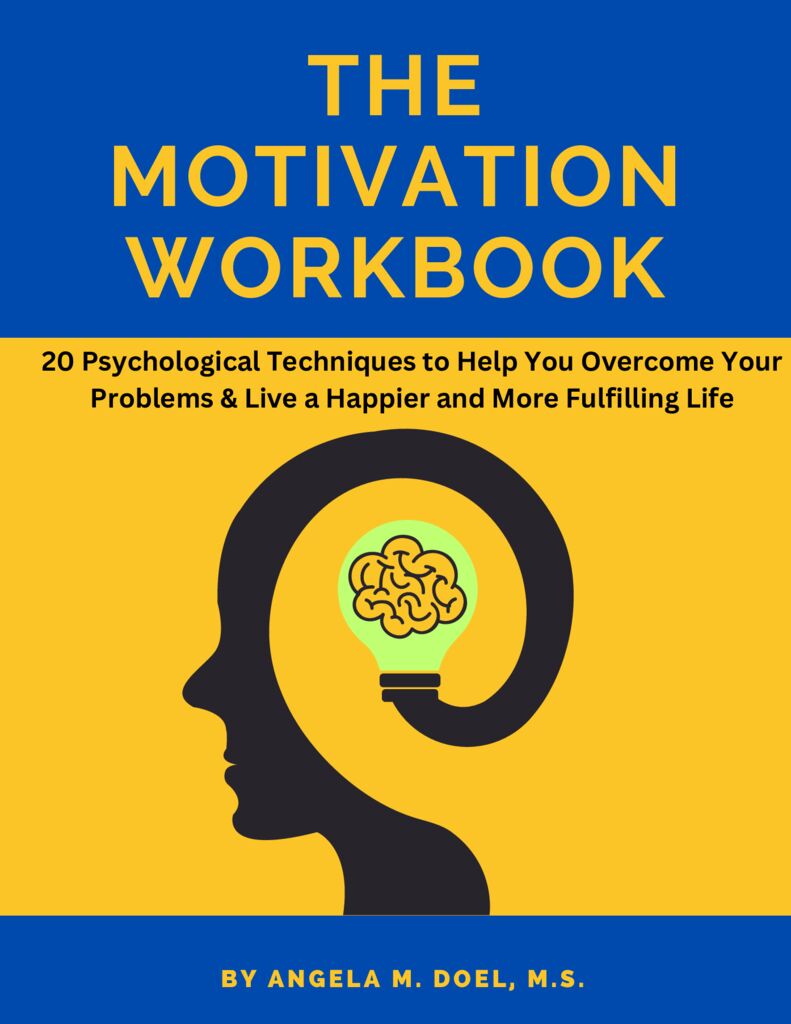This approach to increasing optimism is based on Solution-Focused Brief Therapy (SFBT). The worksheet is designed to increase motivation, shift a person’s focus from problems to possibilities, stimulate creative thinking, and more. (0424, hope, depression, Solution Focused Therapy, agency)
This worksheet, based on Solution-Focused Brief Therapy (SFBT) is intended to help people see the importance of setting realistic goals. It asks people to envision how they want their future to look and then write 3 realistic goals that can guide their decisions and behaviors. It also asks them to think about people who can help them achieve their goals and designate small steps with each one bringing them closer to their goals. (0324, Solution-Focused Brief Therapy, goal-setting, problem-solving)
This worksheet is from Solution-Focused Brief Therapy (SFBT) and is designed to help people apply strengths they have used in solving past problems to their current situations. The worksheet explains why this process can be so helpful and presents a series of questions to explore how past solutions have helped. (0324, solution-focused therapy, problem-solving, decision-making)
This is a technique advocated by Solution Focused Brief Therapy. It encourages clients to continually rate their progress in addressing their problems on a 1 to 10 scale. (0324, motivation, solution-focused therapy)
This Solution-Focused therapy technique asks people to think in the future about what their lives will be like if their immediate problems were solved. (0324. SFBT, solutions, art therapy,)
A “stuck point” is a term used in cognitive-behavioral therapy (CBT) to describe thoughts or beliefs that limit growth, progress, and recovery. These thoughts act as barriers, blocking the journey toward mental and emotional well-being. This worksheet explains common types of “stuck points” such as mind-reading, personalization, “should” statements, and so on. People are asked to identify their dysfunctional thinking and how it affects their emotions and behaviors. (0124. CBT. cognitive behavior therapy, irrational thoughts).
This worksheet is designed to help people who have started therapy reflect on how they have changed their thinking and behavior. (0124. suicide, suicidal ideation)
The WET protocol is an evidence-based, trauma-focused treatment that may lead to a clinically significant reduction in PTSD symptoms over five treatment sessions. (0923. exposure, trauma, PTSD, short-term therapy)
CBT-I helps people recognize and change the unhelpful thoughts or worries that keep them awake at night. The worksheet gives people the five steps to overcoming the negative thinking that keeps them awake as well as sleep hygiene tips and a sleep log. (0923. sleep disorders, insomnia, CBT-I)
This workbook has 20 techniques to help people find the motivation they need to change. Motivation is a much more complex issue than most people, involving at least 12 areas of the brain. This workbook goes well beyond popular psychology concepts of visualization and affirmations, using evidenced-based techniques the workbook helps people set goals, increase flow experiences, improve self-efficacy, overcome doubt, and more. (0823. resistance, change, therapeutic alliance)

